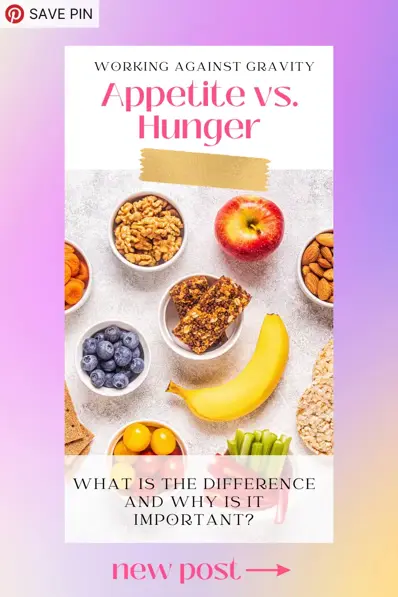
Did you know that there is a difference between hunger and appetite?
Hunger is an important biological signal that cues you to eat when energy levels are low. It helps ensure you have enough fuel for your day-to-day activities, training, and recovery. Appetite is psychological and can be triggered by external factors like seeing, smelling, or thinking about food.
In other words, hunger is a need to eat, whereas appetite is a want to eat. Today, we’ll answer the question, “Why am I eating if I’m not hungry?” and help you identify hunger vs. appetite signals.

Why Am I Eating if I’m Not Hungry?
It is important to honor hunger signals for optimal health. But if you have weight loss goals, it is important to recognize when appetite comes into play to make confident, informed decisions about when to enjoy your next meal or snack. Here are a few reasons you may be eating if you’re not actually hungry.
Advertisement
1. You’re bored
Eating is fun and takes up time. If you’re sitting around the house without much to do, it is common to reach for (or cook!) food as an “activity” to fill that time.
2. You Usually Eat at This Time
If you eat at the same time every day, your body will get used to that routine and cue you to eat. Some of this may be true hunger (we
3. You’ve Created an Associative Habit
Whether you’re eating in front of the TV or at a get-together, you can create “food habits” the same way you create any other habit. So, when those activities or events happen, you eat without thinking twice.
4. You’re Upset
Many foods (junk foods especially) are chemically developed to provide a quick dopamine release when you eat them. Although this may give you a short-term mood boost, it may leave you feeling worse in the long run.
5. You’re Really Happy
Many people use food to celebrate; there is nothing wrong with that! Knowing when you may want to enjoy a treat so you can plan ahead and feel confident in your choices is the best way to (literally) have your cake and eat it, too.
Advertisement
6. Food is Still On Your Plate
Most of us were taught at a young age to “finish everything on your plate,” especially if there was a “no dessert” threat to follow it up. This ingrained habit makes it tough to step back when there is still food on your plate to ask, “Am I still hungry?”
7. Food is Sitting Out
Remember when we said that appetite is stimulated by seeing or smelling food? Well, here you go! If you’ve ever walked by food sitting on your counter and then “decided you were hungry,” you know what we’re talking about.
8. Someone Offered You Food
If someone offers you something yummy, there is nothing wrong with saying “yes” and enjoying it slowly and intentionally. But, there are ways to say “no” without being rude if you decide the offered food won’t help you reach your short- or long-term goals. A quick “No thanks, I’m not hungry right now” will do in most cases.
9. You’re Actually Thirsty
It’s common to mistake thirst for hunger—in fact, this happens about 37% of the time, as thirst signals aren’t as strong as hunger signals. Staying properly hydrated throughout your day will help, but in a pinch, try drinking 16oz of water and waiting 5-10 minutes to see if you’re actually hungry before reaching for a snack (especially if you just ate!).
Advertisement
So, What Can You Do About Eating If You’re Not Hungry?
Listening to appetite signals instead of hunger signals has a time and place. Here at WAG, we know that food can be used to celebrate, soothe, or enhance an experience; there is nothing wrong with that. Planning ahead for treats and moving away from the “good food” vs. “bad food” dichotomy helps you intentionally listen to appetite cues to make confident, informed decisions.
That being said, if you have goals to lose weight or improve performance in the gym (or both), there may be times when you need to check in with yourself and only honor true hunger cues. The list above will help you do a little self-check before reaching for your next meal or snack and ensure you’re eating when you’re truly hungry.
Schedule a Free Intro Call
Working Against Gravity has led the macro tracking and health space for over a decade. Our team doesn’t just understand the science of nutrition—we’ve spent years mastering the art of tailoring it to fit your life. That means no cookie-cutter plans, just real strategies that have worked for over 30,000 people.
Schedule a free call with our team to learn how working with a 1-on-1 WAG coach will help you reach your goals.



